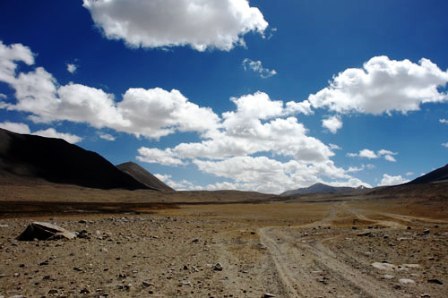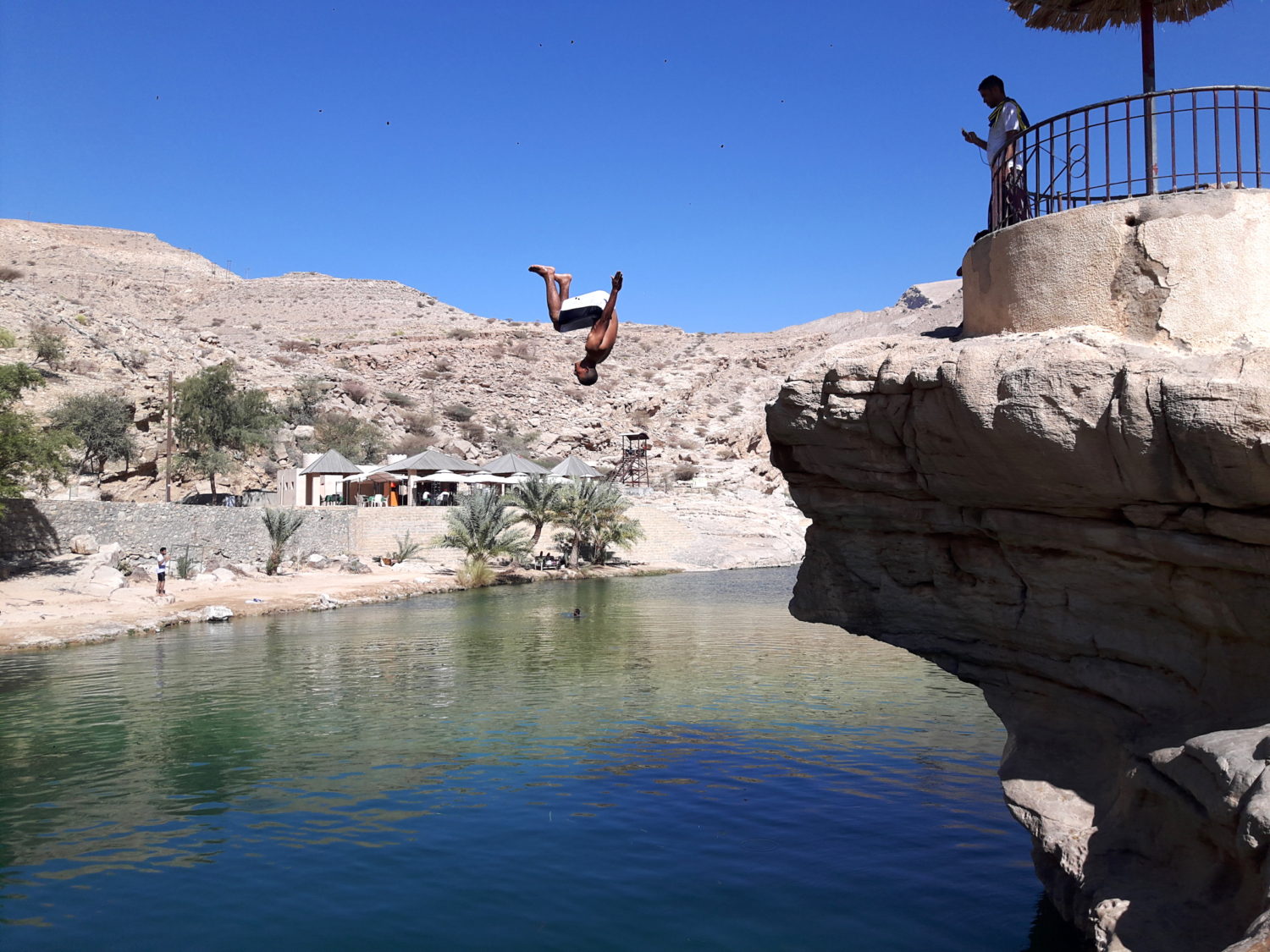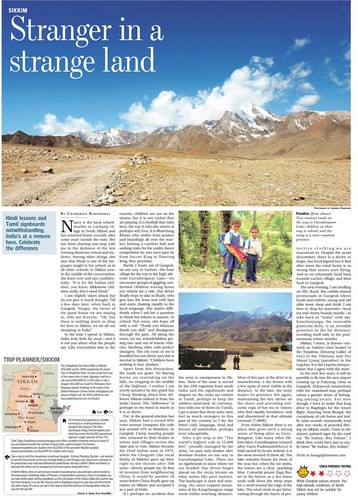Published in Mint Lounge (September 04) as Stranger in a strange land…
***
Nancy is the local school teacher at Lachung village in North Sikkim and has recently returned home after some years outside the state. She has been chatting non-stop with me in the darkness of the late evening about her school and students. Among other things, she says that Hindi is one of the languages taught in her school, as in all other schools in Sikkim now. In the middle of the conversation, she leans over and says confidentially, “It is for the Indian children, you know, Sikkimese children really don’t need Hindi”.
I am slightly taken aback but do not give it much thought. Till a few days later, when back in Gangtok, Norgey, the owner of the guesthouse we are staying in, tells me breezily, “Oh, but there is nothing much to shop for here in Sikkim, we do all our shopping in India”.
In the time I spend in Sikkim, India truly feels far away – and it is not just about what the people say. Like everywhere else in the country, kids are out on the streets but it is not cricket they are playing. It is football that rules here, the way it rules the streets of perhaps only Goa. It is Baichung Bhutia who smiles from posters and hoardings all over the market, kicking a careless ball and seeking votes for the reality dance competition he was once part of; from Soccer King to Dancing King, they proclaim.
Barely two hours out of Gangtok, on our way to Lachen – base village for the trip to the high-altitude Gurudongmar Lake – we encounter groups of giggling, uniformed children waving down our vehicle for a ride. Our driver finally stops to take in Shaily, who gets into the front seat with him and starts chatting rapidly in the local language. She smiles diffidently when I ask her a question in Hindi but refuses to answer. At school 7km away, she hops off with a soft thank you bhaiyya, thank you didi and disappears through the gate. All along the route, we see school children getting into and out of tourist vehicles, hitching rides with perfect strangers. The city cynic in me is horrified but our driver says this is normal in Sikkim: “Children have nothing to fear, madam”.
Apart from this distraction, the roads are quiet. No blaring horns, no overtaking on the hills, no stopping in the middle of the highway. I realize I am overly sensitive by this point but I keep thinking about how different Sikkim indeed is from the India I know. The “difference” is perhaps in my mind as much as it is in theirs.
For, in the general elections last year, Sikkim had a record 83% voter turn-out (compare this with just over 41% in Mumbai). In Gangtok, I keep meeting people who came back to their homes in towns and villages across the state just to vote. Sikkim became the 22nd Indian state in 1975, when the Chogyals (the royal family of Sikkim) gave up their right to the throne after 300 years – driven, people say, by fear of invasion from neighbouring China. It would be 18 more years before China finally gave up claims on Sikkim and accepted it as a part of India.
 But it’s perhaps no accident that the army is omnipresent in Sikkim. Most of the state is served by the 19th regiment from South India and the signboards and slogans on the rocks are written in Tamil, perhaps aimed in keeping the soldiers motivated in their arduous efforts. In conversation with one of them (in Tamil), I get a sense that these army-men feel as much strangers in this part of the country as I do; the bitter cold, language, food and terrain all unfamiliar, perhaps even inhospitable.
But it’s perhaps no accident that the army is omnipresent in Sikkim. Most of the state is served by the 19th regiment from South India and the signboards and slogans on the rocks are written in Tamil, perhaps aimed in keeping the soldiers motivated in their arduous efforts. In conversation with one of them (in Tamil), I get a sense that these army-men feel as much strangers in this part of the country as I do; the bitter cold, language, food and terrain all unfamiliar, perhaps even inhospitable.
 After a pit stop at the “The world’s highest cafe at 15,000 feet”, proudly managed by the army, we pass only bunker after desolate bunker on our way to Gurudongmar Lake. There are no signboards to show where we are headed. Our driver forges ahead on the rocky terrain on what seems like pure instinct. The landscape is stark and stunning, the snow-capped mountains of the Kangchengyao range seem within touching distance. Most of this part of the drive is in monochrome, a dry brown with a few spots of snow visible in the distance. At the lake, the army makes its presence felt again, maintaining the tiny shrine on the shore and providing welcome cups of hot tea to visitors who feel rapidly breathless, sick and disoriented at that altitude (over 17,000 feet).
After a pit stop at the “The world’s highest cafe at 15,000 feet”, proudly managed by the army, we pass only bunker after desolate bunker on our way to Gurudongmar Lake. There are no signboards to show where we are headed. Our driver forges ahead on the rocky terrain on what seems like pure instinct. The landscape is stark and stunning, the snow-capped mountains of the Kangchengyao range seem within touching distance. Most of this part of the drive is in monochrome, a dry brown with a few spots of snow visible in the distance. At the lake, the army makes its presence felt again, maintaining the tiny shrine on the shore and providing welcome cups of hot tea to visitors who feel rapidly breathless, sick and disoriented at that altitude (over 17,000 feet).
Even within Sikkim there is nowhere that gives such a strong sense of being alien as Gurudongmar. Like many other Sikkim lakes, Gurudongmar (named after Guru Padmasambhava) is held sacred by locals; indeed, it is the most revered of them all. The lake remains frozen for most of the year but, when the ice melts, the waters are a clear, sparkling blue. Colourful prayer flags flutter in the breeze, as a few brave souls walk down the steep steps for a stroll around the edge of the lake. The wind starts to get bitter, cutting through the layers of protective clothing we are ensconced in. Despite the acute discomfort, there is a desire to linger but local legend has it that after noon, the wind factor is so strong that stones start flying. And so, we reluctantly head back towards Lachen village, and then on back to Gangtok.
The next evening, I am strolling on MG Road, the cobble-stoned promenade in Gangtok where locals and visitors, young and old alike meet, shop and drink. I am here to shop for souvenirs – local tea and cherry brandy mainly – to take back to ‘India’ with me. Kanchenjunga, the venerable protector deity is an invisible presence in the far distance, revealing itself only in the post-monsoon winter months.
Sikkim, I learn, is known variously as Sukhim (new home) to the Nepalese, Denzong (valley of rice) to the Tibetans and Ney Mayal Lyang (paradise) to the Lepchas. It is the Lepcha interpretation that I agree with the most.
In the next few years, it will be possible to fly into the new airport coming up at Pakyong, close to Gangtok. Enhanced connectivity with the mainland may perhaps infuse a greater sense of belonging among locals. For now though, I have to make that long drive to Bagdogra for the return flight. Entering West Bengal, the cacophony of cab horns and traffic jams sounds unnaturally loud after two weeks of peaceful driving on the Sikkim roads. Close to the airport, painted signs by the road say ‘Be Indian, Buy Indian’. I think they could have just as easily been ‘Be Indian, Bye Indian’.
TRIP PLANNER
Getting there
Fly to Bagdogra from Kolkata or New Delhi (Rs. 8,000 round-trip on Jet Airways & Kingfisher). Or take a train from any of the major cities to New Jalpaiguri and a bus or cab further on to Gangtok (3.5 hrs by road). If you’re in the mood for a unique experience, try a chopper ride from Bagdogra airport to Gangtok (Rs. 3000 per head, 35 mts).
Where to stay
For the best local experiences, stay in homestays / small guesthouses in Gangtok. We stayed at The Shire Guesthouse (Rs. 1,500-Rs. 2,500 per night per couple, inclusive of food). Or stay at the Tashi Tagey Guesthouse for some of the best home-made Chowmein & local cuisine. If you are inclined towards the comfort of large hotels, check out The Oriental (double rooms from Rs.2800 per night) or the up-market Mayfair Gangtok (Rs. 12000/ onwards per night inclusive of breakfast and dinner). In North Sikkim, your travel agent will put you up in a small guesthouse as part of the package.
What to do
Take a day to visit the monasteries in and near Gangtok – Enchey, Phodong, Rumtek – and another to visit the China border in the East – Nathu La via Tsomgo Lake. Spend your evenings on the pedestrians-only mall road (Mahatma Gandhi Road). All trips to North Sikkim and Nathu La need permits which can be arranged by local travel agents along with tours.
In North Sikkim, drive on surreal lunar terrain to Gurudongmar Lake and take a picnic basket to the picturesque Yumthang Valley of Flowers, a rhododendron sanctuary. Closer to Gangtok, you can take white-water rafting expeditions on the cold waters of the Teesta. Make this another day trip from Gangtok, or as we did, stop en route to Bagdogra airport on your way out and end the trip with a bang. Of course, you get to the airport drenched and have to change before they let you into the aircraft!









Great blog…great snaps! Is there anyway I can follow your blog? I loved it here!!
J
Thanks, Jay! You can follow this blog thru rss feed – easiest way 🙂
I would actually argue that perhaps it is not really important for locals to feel a sense of belonging. If the ascension of Sikkim happened for strategic reasons (ie to prevent Chinese incursion), then as long as that objective is sustained, and the folks are able to have elections in which they choose their own leadership, then it’s perfectly fine even if things are very different in Sikkim and people think of India as a different place.
Great article on Sikkim, by the way. Added it to my list of places to go, though don’t know when it will be possible.
Arundhati, glad you liked the piece and want to go there… it is a wonderful place to visit… but there is something disturbing about how people all over the North-East feeling this sense of alienation…
After a long time I came here to comment. What a great post it is !
I am yet to visit this part of India and your posts are definitely going to help me.
Nisha, thanks! go, go – I strongly recommend Sikkim 🙂
Gangtok is really a heaven on earth. Thanks for sharing spectacular visuals and information.
Thanks for sharing a relevant article about Gangtok. The way you described your journey will help many future travelers.